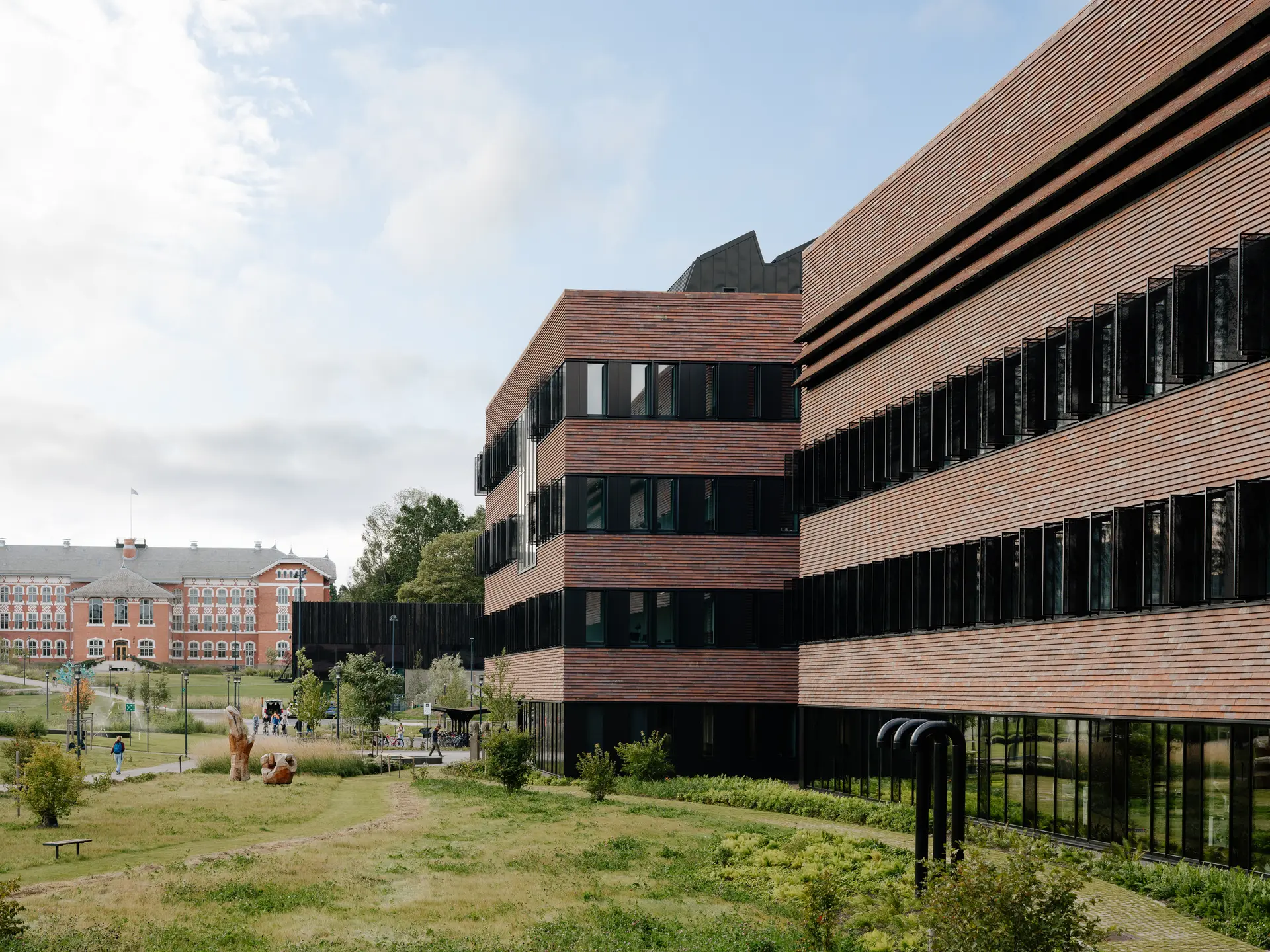New veterinary building for creatures great, small and amoeboid

The 63,000m2 building, the largest public building in Norway, located at the Norwegian University of Life Sciences (NMBU)’s Campus Ås, brings together both research facilities and teaching space for veterinary medicine – a first not just in Norway, but in the world.
The desire to understand the natural world has always been at the heart of human innovation but has gained critical urgency as globalism accelerates the cycle between our impact on the world and the world’s impact on us. The new veterinary building opened in late 2021 and was conceived with this cycle in mind.
“It is the first campus of its kind,” says Karoline Igland, Head of Department at Henning Larsen’s Oslo office, who has played a major role in the project throughout the design and construction.
“No building anywhere in the world unites the same range of researchers and experts or has the same requirements in terms of safety and readiness. In addition to being a technically advanced and highly secure facility, it also needed to be an open arena for students and faculty. The result you see today has required ten years of collaboration, research, and innovation.”
The Veterinary Building at Campus Ås is in fact eight distinct but linked buildings, uniting previously disparate resources (some of which were in Oslo, 30km to the north of NMBU’s main campus.) Developed for Statsbygg by Multiconsult, Henning Larsen, Fabel Arkitekter, Link Landskap, and Erichsen + Horgen, the project is one of the largest and most complex construction projects ever undertaken in Norway.



